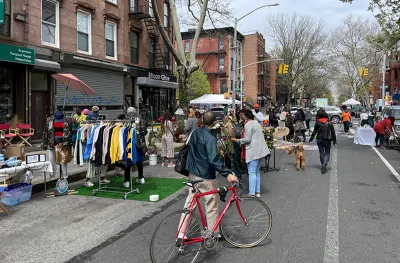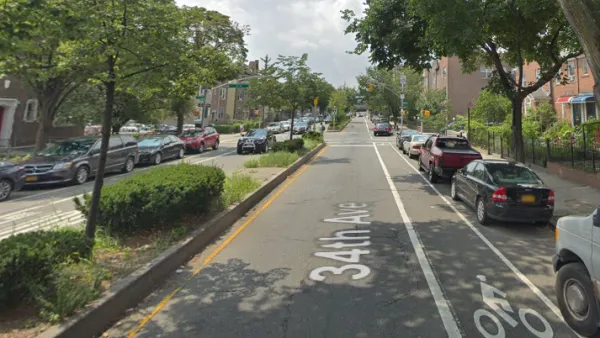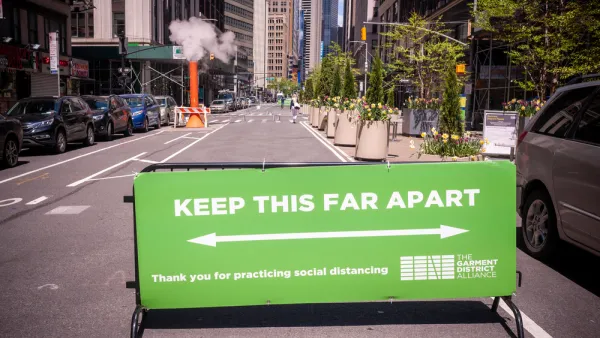As city funding runs out, the number of miles in open streets projects has dwindled from 83 to just 20.

Two high-profile New York City open streets will end or cut back their programming, potentially signaling a decline in the pandemic-era project, reports Kim Velsey in Curbed.
Park Slope’s Fifth Avenue Open Street won’t be returning this year, and Vanderbilt Avenue will cut back its season and hours. According to Velsey, this is in part because “the city left it up to local groups to pay for and run a program it has long treated as a kind of block party, and four years in, the money has run out.”
Velsey adds, “Because this has been the model, wealthy areas that could raise funds ended up having more open streets than lower-income ones, which confused public-space improvements (which benefited pretty much anyone who wasn’t trying to drive through at that particular time) with gentrification.” By the time the program was two years old, the miles of open streets in the city dropped from 83 to 20.
Advocates say the city should fund the program in the same way that other cities around the world do. According to a DOT spokesperson, the city is spending $30 million in public spaces, including its Plaza Equity Program, which supports open streets efforts but which, according to the article, has been slow to pay out participating groups.
FULL STORY: Is This the End of Open Streets?

National Parks Layoffs Will Cause Communities to Lose Billions
Thousands of essential park workers were laid off this week, just before the busy spring break season.

Retro-silient?: America’s First “Eco-burb,” The Woodlands Turns 50
A master-planned community north of Houston offers lessons on green infrastructure and resilient design, but falls short of its founder’s lofty affordability and walkability goals.

Delivering for America Plan Will Downgrade Mail Service in at Least 49.5 Percent of Zip Codes
Republican and Democrat lawmakers criticize the plan for its disproportionate negative impact on rural communities.

Test News Post 1
This is a summary

Test News Headline 46
Test for the image on the front page.

Balancing Bombs and Butterflies: How the National Guard Protects a Rare Species
The National Guard at Fort Indiantown Gap uses GIS technology and land management strategies to balance military training with conservation efforts, ensuring the survival of the rare eastern regal fritillary butterfly.
Urban Design for Planners 1: Software Tools
This six-course series explores essential urban design concepts using open source software and equips planners with the tools they need to participate fully in the urban design process.
Planning for Universal Design
Learn the tools for implementing Universal Design in planning regulations.
EMC Planning Group, Inc.
Planetizen
Planetizen
Mpact (formerly Rail~Volution)
Great Falls Development Authority, Inc.
HUDs Office of Policy Development and Research
NYU Wagner Graduate School of Public Service





























